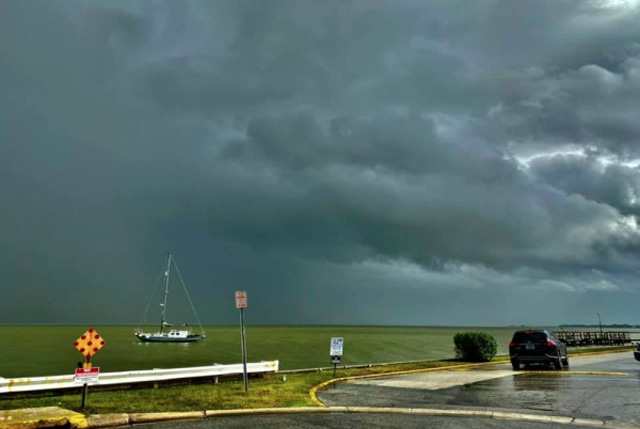
WASHINGTON, Aug 8 (NNN-AGENCIES) — Much of the eastern United States was lashed with intense storms Monday, leaving at least two people dead, hundreds of thousands without power and thousands of flights canceled or delayed.
Millions of people were under severe weather alerts, including tornado watches, as rain, strong winds and hail swept east along nearly the entire eastern seaboard, from Alabama to New York.
The National Weather Service (NWS) had predicted a “moderate risk” of hazardous storms, with gusts up to 80 miles per hour (130 kilometers per hour).
“Stay weather aware and make sure you have multiple ways to receive warnings,” the NWS in Baltimore and Washington said on social media earlier in the day.
As much of the severe weather danger subsided into the late evening, some areas faced flood threats as rain continued to fall.
Hail as large as 4.5 inches (11.5 cm) in diameter was recorded in Virginia, the NWS said.
In Alabama, a 28-year-old man died after being struck by lightning in an industrial park parking lot, a local ABC station reported.
And in South Carolina, a 15-year-old was killed when he was hit by a falling tree outside his grandparents’ house, according to a local CBS station.
By late Monday, more than 700,000 customers had lost power along the East Coast, according to tracking website Poweroutage.us.
More than 1,700 US flights were canceled on Monday and more than 8,000 delayed as the severe weather loomed, website FlightAware said.
In Washington, federal agencies sent employees home early at 3 pm (1900 GMT) in anticipation of the weather.
The storms came as large parts of the southern United States, including Texas, Louisiana and Florida boiled under excessive heat warnings, with temperatures up to 108 degrees Fahrenheit (42 Celsius) predicted through Tuesday.
Scientists say climate change has amplified the intensity and frequency of extreme weather events around the world. — NNN-AGENCIES











